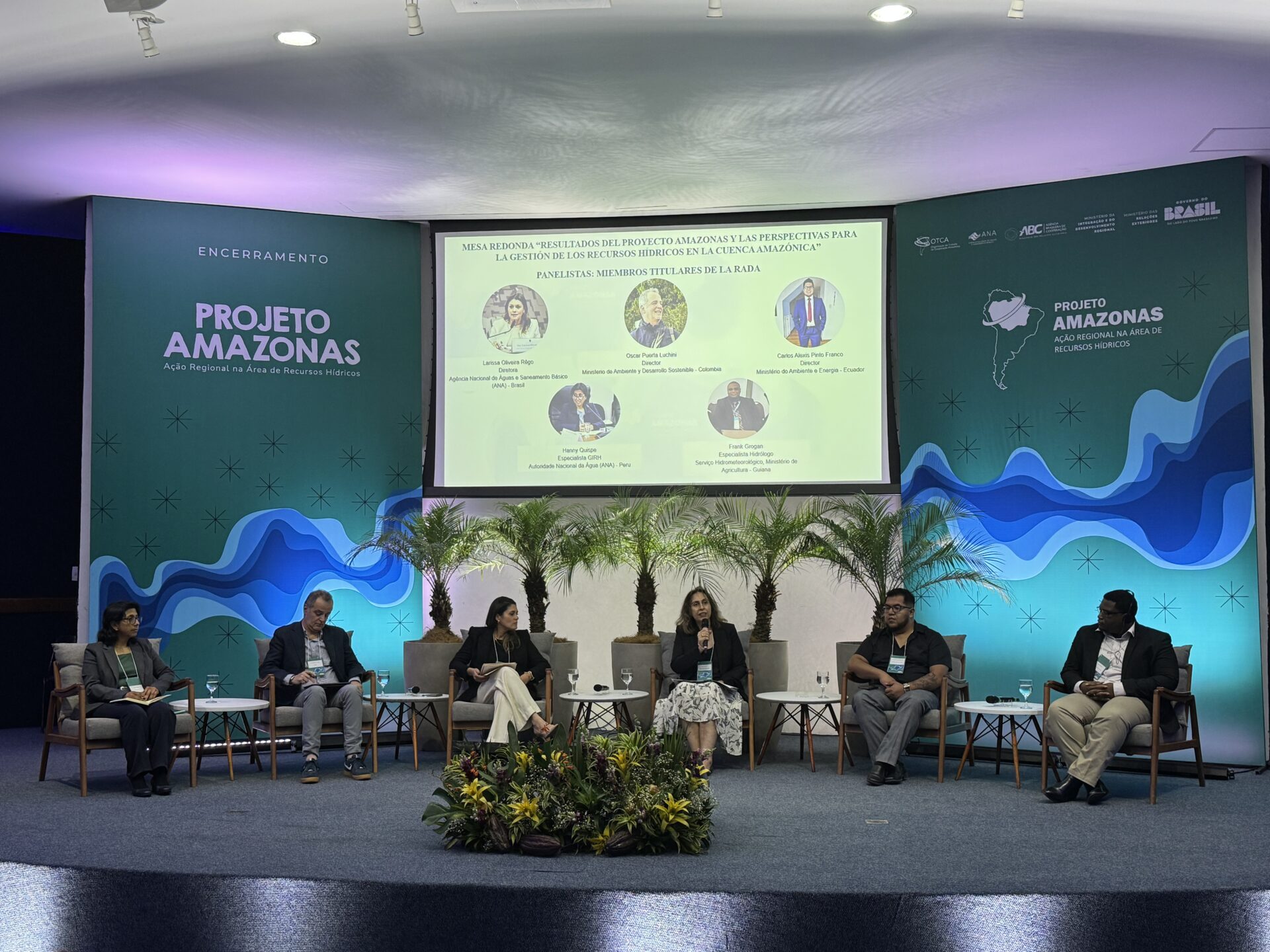Index
Topics
Amazon Basin Project, Amazon Cooperation Treaty Organization (ACTO), Bolivian Amazon, Glacial waters, Glacier Monitoring, Institute of Hydraulics & Hydrology, Integrated Water Resource Management (IWRM), Proyecto Cuenca Amazónica, Water Security in the face of Hydrometeorological Events
Share
This October, the Institute of Hydraulics and Hydrology (IHH) of the Universidad Mayor de San Andrés installed monitoring equipment on the glaciers that supply water to the cities of La Paz and El Alto. The activity is an essential part of the intervention aimed at ensuring the water security of the two urban centers that rely on water from the Andes for human consumption, agricultural, and livestock activities.
The retreat of Andean glaciers as a consequence of climate change, associated with the climatological phenomenon El Niño and population growth, has led to a decrease in water supply in the region, with repercussions in the Amazon basin, as many of the headwaters of the Amazon rivers are located in the Andes.
According to official figures, glacier coverage loss in Bolivia has been between 37% and 42% in the last 30 years. This retreat is particularly critical for the cities of La Paz and El Alto, where a population of 2.6 million people relies on glacier water.
The monitoring system and efficient water use
The implementation of the monitoring system will directly benefit 1.8 million people in the two cities and will allow the Institute of Hydraulics and Hydrology (IHH) of the Universidad Mayor de San Andrés, which is executing the project in coordination with the Ministry of Foreign Affairs of Bolivia and the Ministry of Environment and Water (MMAyA), to develop a management model for efficient water use, which will be presented in 2025 as a result of the intervention.
“Among the actions we have already proposed to improve water supply in the cities of La Paz and El Alto are structural measures such as reducing losses and leaks in the network, implementing Sustainable Urban Drainage Systems (SUDS) for urban water utilization, and building storm tanks and alternative uses. We also intend to propose a program to promote rainwater harvesting in households,” explains the national coordinator of the project, José Luis Montaño, a research professor at IHH.
The monitoring stations
The first two stations providing meteorological, hydrometric, glacier melting, and current and future water supply and demand data were installed on October 16 at the Tuni reservoir and in the Condoriri basin.



According to the national intervention work schedule, the glacier monitoring system will be completed by mid-December, with the installation of the third weather station.
To restore the existing monitoring system, one of the objectives of the intervention project, about twenty automatic water level sensors in poor condition are being replaced. These sensors, located at the outlets of the glacier basins, will allow the development of a glacier hydrological model and the calculation of the mass balance of each glacier.
Once the monitoring system is completed, the hydrometeorological and hydrometric data will be cleansed and processed in a continuously fed database, from which the water management model for all intervened basins will be generated, taking into account variability and climate change.
On October 31, the Ministry of Foreign Affairs of Bolivia celebrated the inauguration of the first phase of the monitoring system with the participation of cooperation agencies, organizations related to the topic, and representatives of the diplomatic corps accredited in Bolivia. The event took place at the foot of the Condoriri glacier to present the national intervention project, its scope, and importance for the sustainable management of water from glacier sources.



Strategic Actions Program
The intervention ‘Water Security in the cities of La Paz and El Alto, through the efficient use of glacier water resources‘ is carried out within the framework of the Strategic Actions Program (PAE), under the Amazon Basin Project (OTCA/PNUMA/GEF).
The PAE was adopted in 2017 by the OTCA member countries (Bolivia, Brazil, Colombia, Ecuador, Peru, Guyana, Suriname, Venezuela), as a guiding instrument for regional cooperation to strengthen Integrated Water Resources Management (IWRM), adapt institutions to variability and climate change, and also for knowledge management to facilitate its application in the formulation of public policies and decision-making.
Among the 19 strategic actions of the program, which are key to promoting collective responses to the rapid degradation of water resources, land, and biodiversity, is the action for the development and implementation of measures to adapt to glacier retreat in the Andes of the Amazon basin.
This action is currently being carried out through the monitoring and water security project in the Bolivian Andes and also through the intervention seeking water supply alternatives for communities in the Peruvian Amazon basin dependent on water from the Carabaya and Apolobamba glaciers.
Related news
Post
17 de December de 2025
On December 11, the Amazon Basin Project (ACTA/UNEP/GEF) held a Seminar on the Exchange of Cooperation Experiences for the Management [...]
Post
16 de December de 2025
The roundtable discussion “Results of the Amazon Project and Prospects for Water Resource Management in the Amazon Basin” was held [...]
Post
28 de November de 2025
Water is the central element through which most of the impacts of climate change manifest themselves: more intense droughts, extreme [...]




